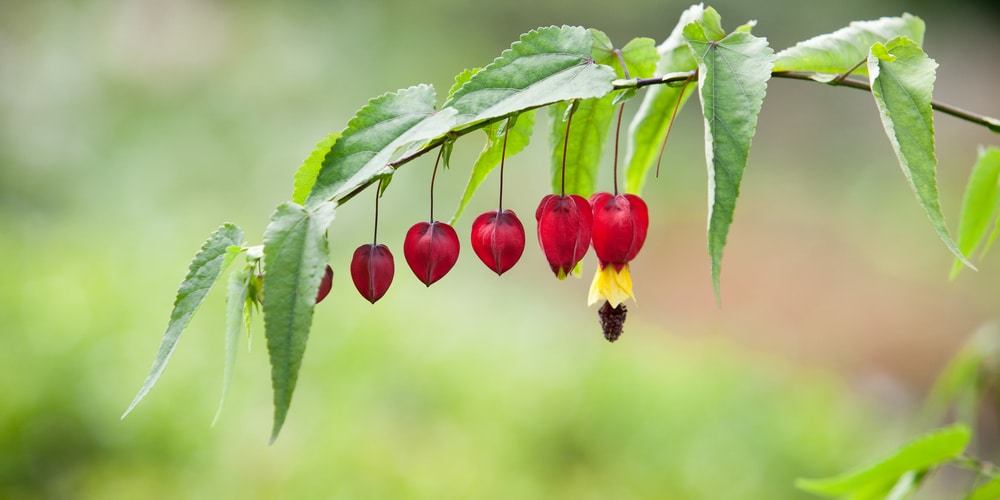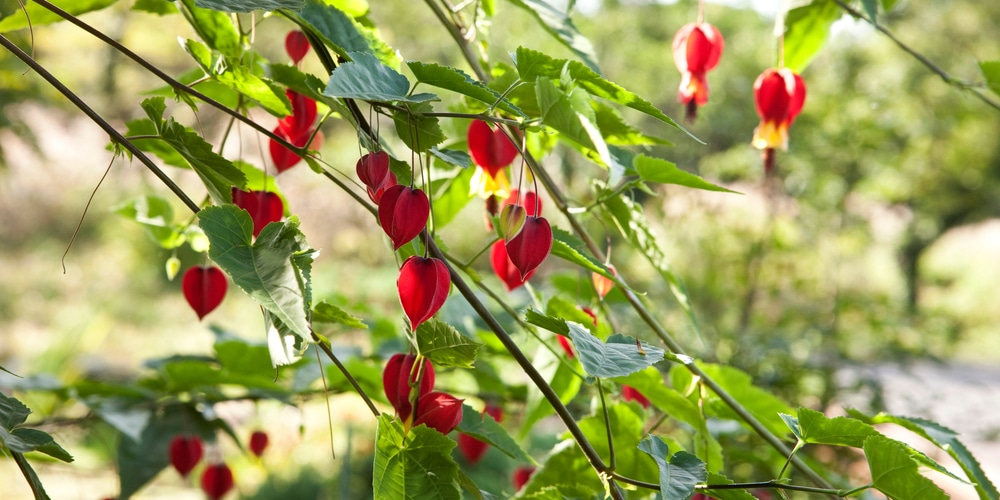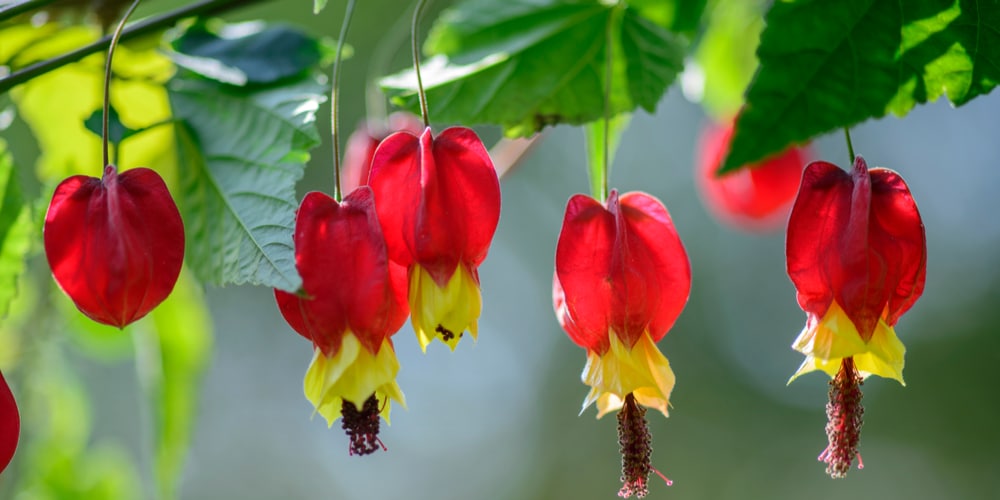Abutilon megapotamicum is a showy shrub that performs well in containers or sunny patios. The plants produce vividly-colored flowers that make any garden look more lively and attractive. Native to Brazil, this shrub isn’t particularly challenging to grow (if you live in a suitable climate). Still, here, we included all you need to know about the plant and some tips to make the most out of this plant’s stunning looks. Let’s look at Abutilon Megapotamicum care.
| Botanical Name | Abutilon megapotamicum |
| Common Name | Trailing Abutilon or flowering maple |
| Plant Type | Perennial |
| Flower Color | Showy and colorful: the petals are yellow, while the calyx is bright red. The contrast is eye-catching and attractive, making the blooms the plant’s highlight. |
| Size When Mature | About 8 feet tall and wide |
| Bloom Time | From June to October |
| Sun Requirements | Full to Partial Sun |
| USDA Hardiness Zones | 7-11 |
| Soil PH Range | Slightly Acidic to Neutral (between 5.5 and 7.0) |
| Soil Type | Moist, rich and well-draining |
| Water Needs | Medium |
| Native Area | South America |
What you Need to Know About Abutilon Megapotamicum
Trailing abutilon is an excellent addition to porches: you can train it to grow on a trellis or as hanging plants. And the best part is that, under ideal conditions, the shrub will grow fast. So, if you need a plant to make your garden more colorful, consider adding Abutilon Megapotamicum.
Indeed, this shrub blooms for weeks, from early summer to frost, and attracts plenty of beneficial pollinators with its colorful flowers. You can expect bees, butterflies, and even hummingbirds to get to your garden.
Don’t worry about your shrubs causing reactions to curious pets or kids. The plant isn’t toxic to animals or humans, making it a safe plant to add to a garden that receives frequent visits.
Abutilon Megapotamicum Care
Abutilon Megapotamicum isn’t particularly challenging to grow. Give it all it needs, and it will thrive in most regions in USDA zones between 7-11. Here is all you need to know to ensure your trailing abutilon grows strong and healthy.
Light
Ideally, plant your abutilon under the full sun. However, if you live in a hot region, you might have to shelter yourself from the sun in the summer. Indeed, too much lighting might be detrimental and cause your plant to stop producing flowers.
Water and Soil Needs
Abutilon isn’t a heavy feeder but needs more water over the summer. The soil should feel dry before adding extra moisture. Keep your plant constantly moist to enhance its growth.
Plant it in a rich and well-draining substrate to increase water retention and limit problems. The shrubs aren’t fussy about soil pH but will perform better in slightly acidic to neutral conditions.
Temperature Requirements
This shrub is native to Brazil, meaning it prefers warm temperatures. The ideal hardiness zones to grow this plant are from 8 to 11. However, you might have some luck growing it in zone 7 too.
Keep in mind that your abutilon won’t survive frost. Bring it indoors during the winter if you want to enjoy its beauty over the next year. Also, don’t forget to shelter it from cold drafts and strong winds as the plant are susceptible to damage.
Fertilizer
While fertilizer isn’t a requirement, it will boost your abutilon’s growth. Look for products high in phosphorous to encourage healthy root development and get plenty of blooms.
Always follow the product label to avoid harming your plants. Alternatively, you can use manure or compost: they are organic and won’t cause any problems to your abutilons.
Common Diseases
The good news about growing Abutilon Megapotamicum is that it isn’t susceptible to most pests and diseases. Still, aphids and mites might attack your plant and cause some damage.
Take action as soon as you notice something off with your plan to contain the problem. Don’t forget to dilute the products with water for young plants. Also, ensure you purchase pesticides suitable to your plant.
Abutilon Megapotamicum Propagation
Propagating Abutilon Megapotamicum isn’t anything out of this world. You can take cuttings and wait for them to root in water. The process usually takes about three weeks.
Transfer your cuttings to potting soil as soon as roots appear. With proper care, your seedling will start growing in about 15 days. When the container becomes too small, move your cuttings to a large pot (with drainage holes).
Don’t forget to plant them in rich soil to encourage healthy root development.
Related Article: Flowers That Start with A


